experience curve
description: the relationship between experience producing a good and the efficiency of that production, specifically, efficiency gains that follow investment in the effort
25 results

The Switch: How Solar, Storage and New Tech Means Cheap Power for All
by
Chris Goodall
Published 6 Jul 2016
His estimate of how much costs fell every time accumulated production doubled? He suggested an experience curve slope of 21.6 per cent, a rate of decline even faster than solar PV. Most other estimates are slightly more conservative; Michael Liebreich does tend to be a bit enthusiastic. But even if the experience curve is slightly less steep than he suggests, the rate of growth of battery volumes more than makes up for this. (Remember that the speed of decline of the cost of a battery or a solar panel is determined both by the steepness of its experience curve and the rate of growth of accumulated production.) You may recollect that BCG commercialized the idea of the experience curve fifty years ago as part of the toolkit for its consulting practice.
…
If, for example, producers made a total of 1,000 units and the cost was $10 each, then by the time a total of 2,000 had been made the cost would be $7.50 per unit. Bruce Henderson, the founder of BCG, called this the ‘experience curve’ and his company later showed that the cost declines arising from this effect were pervasive across different industries, countries and time. Although the rate of cost reductions tends to be fastest in products that are manufactured using automated processes in large factories, the experience curve phenomenon can also be seen in office-based or even agricultural activities. The speed of the decline varies from fractions of one per cent for each doubling of total production to levels even greater than that observed in semiconductors.
…
Although the speed of fall varies from period to period, the slope matches a 20 per cent experience curve over the course of the last forty years. Source: Creative Commons Swanson’s Law tracks the cost of solar PV modules. The cost of solar has fallen predictably and consistently from 1976 to today. Twenty per cent is a slightly slower rate of decrease than BCG calculated for the early semiconductors half a century ago but still a strikingly fast rate of decline – and the figure has been standard wisdom for some time. Back in 2004, a group of Dutch and German researchers exhaustively discussed the evidence for the experience curve for photovoltaics. Their conclusion was clear-cut.

Fully Automated Luxury Communism
by
Aaron Bastani
Published 10 Jun 2019
Around the same time Gordon Moore made his forecast about the future of computing, Bruce Henderson – founder of the Boston Consulting Group – developed a concept that would come to be referred to as the Henderson Curve (more recently the Experience Curve). Based on observations he made while working with his clients, this soon became a sophisticated predictive model, outlining how the costs of a manufactured good decline by as much as 20 per cent every time capacity is doubled. The variables driving that behaviour are relatively simple, ranging from greater labour efficiency to improvements in product design. While the experience curve does not offer the same rapid transformation one sees in the exponential improvement of digital technologies, its dividend is of critical importance to extreme supply – specifically when it comes to renewable energy.
…
By the middle of the 1970s, and as a result of the experience curve, that figure had fallen dramatically to around $100 a watt – still uncompetitive, but an eye-catching improvement. More recently, however, solar costs have changed beyond all recognition with compounding improvements in price-performance meaning a watt of solar energy in sunnier countries can cost as little as fifty cents. Few disagree that this trend is only set to continue, and with global solar capacity doubling every two years – it increased by a factor of one hundred between 2004 and 2015 – it is likely that the dividends of the experience curve have much further to go.
…
A generation from now, purchasing the energy powering your car may seem counter-intuitive, and a generation thereafter it will border on absurd. That energy storage technology is subject to the experience curve just as much as renewable generation is important, because in any transition beyond fossil fuels – and towards extreme supply, where it becomes permanently cheaper – both will be necessary. If the experience curve persists across both, even just for another decade or two, the paradigm shift in energy will be every bit as disruptive as the rise and diffusion of fossil fuels after the early 1800s. Solar and the Global South Given renewable energy is a twenty-first-century technology, many would presume its effects, as with the mobile phone and internet, will be felt most profoundly across the Global North – at least initially.
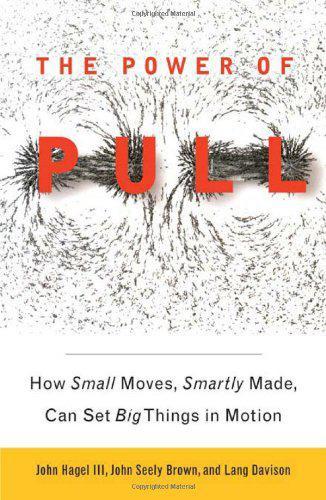
The Power of Pull: How Small Moves, Smartly Made, Can Set Big Things in Motion
by
John Hagel Iii
and
John Seely Brown
Published 12 Apr 2010
The relationship proved remarkably consistent, although the specific rate of performance improvement did vary, ranging anywhere from about a 10 percent to a 30 percent reduction in cost with each doubling in performance. Rebranding this concept as “the experience curve,” BCG spelled out the wide-ranging implications of this relationship for business strategy, including the economic importance of market share and the opportunity to build balanced portfolios of business initiatives to effectively leverage the economics of the experience curve. The idea caught on in a big way among the large corporations that dominated our twentieth-century push economy. Thanks to the experience curve, managers could now conceptualize a relationship between the size and the efficiency of their operations: The bigger a given operation got, the more efficient it became.
…
Thanks to the experience curve, managers could now conceptualize a relationship between the size and the efficiency of their operations: The bigger a given operation got, the more efficient it became. Scalable efficiency soon became something of a secular religion, with the experience curve as its creed. Consistent with the focus on scalable efficiency, the experience curve measured cost reduction as the key dimension of performance. It was simple and powerful. But it had one troublesome characteristic. Every experience curve was in the end a diminishing returns curve. The more experience accumulated in a specific industry, the longer it took to get the next increment of performance improvement. From the viewpoint of the institutional leaders of the time, this was not particularly worrisome.
…
Although from a distance it may look like they are emerging spontaneously, self-organizing in response to the needs of the participants, a closer look reveals that creation spaces are carefully crafted by their organizers, especially in the early stages, to engage the right kinds of participants and foster specific types of interactions, all within environments that unleash the potential for increasing returns. In fact, these creation spaces may change the way the “experts” look at business strategy. The “experience curve,” first popularized by Boston Consulting Group in the late 1960s, has proved remarkably accurate in describing how performance improves in industries as diverse as semiconductors, toilet paper, and beer. It has been a foundation of business strategy for decades. Yet in all these industries experience curves are also diminishing returns curves—the more experience an industry accumulates, the longer it will take to accumulate enough experience to deliver a comparable increment of performance improvement.
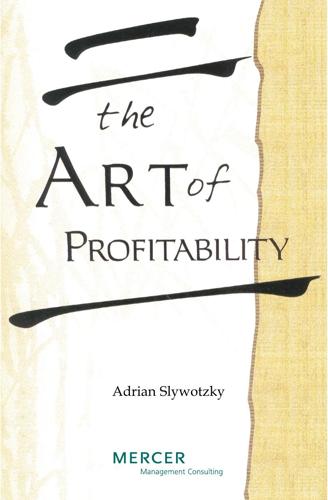
The Art of Profitability
by
Adrian Slywotzky
Published 31 Aug 2002
“Yes,” Steve agreed, “but you said even these twenty-three won’t cover every case.” “That’s right. I was very honest with you about it. But again, you’ll know the principles, the arithmetic, and the questions to apply in the cases that haven’t been profiled yet.” “So what’s left to go?” “The next model is Experience Curve Profit. Do you know the experience curve?” “Yes, a little.” “That’s good. You know, it’s funny. The experience curve is about one percent of the business school curriculum today. Back in the 1970s, it used to be sixty percent of strategy.” “Does it still work?” “In the right circumstances, it’s almost unbeatable,” said Zhao. “See you next week.” Steve had one foot out the door when Zhao stopped him.
…
Edwards Deming would call constancy of purpose—was the key. But the initial breakthrough in insight and in attitude came from applying the experience curve idea.” “We don’t run into it much today,” Steve offered. “You’re right. It’s seen as old-fashioned.” “But in a lot of businesses, it’s a fantastic tool. It’s their key to making money.” “Correct,” said Zhao. “So why isn’t it used more often?” “You already know the answer.” “Another profit paradox.” “Sadly, yes. I can’t explain it, only report it. However, I should point out that the experience curve is potentially a very dangerous idea,” Zhao continued. “How so?” “That’s exactly what you’re going to tell me . . . next week.”
…
“I’m the only one studying profitability with David Zhao.” Zhao rolled his eyes. “Okay then, Jack Welch. If you’re so smart, tell me how you managed with your assignment from last time. Did you figure out the danger in the experience curve?” “I think so.” “Let’s have it then.” “I think it goes something like this. I tried to imagine an organization completely and devoutly focused on experience curve cost management. Concentrating on every element of cost, graphing up the cost per unit over time, cost per unit versus cumulative experience, and so on. “I can see them working very hard on every single detail. But I also see them operating totally inside a big cube that is limited by their own thinking and their own system.

Nothing but Net: 10 Timeless Stock-Picking Lessons From One of Wall Street’s Top Tech Analysts
by
Mark Mahaney
Published 9 Nov 2021
But what are those benefits? Following are four to keep in mind. Full-blown economists will have better, deeper explanations of these, but these come from my quarter century of observing companies that clearly achieved scale and those that didn’t. First, scale can provide benefits in the form of experience curves. Per Wikipedia, learning or experience curve effects express the relationship between experience producing a good and the efficiency of that production. I’ll simplify that as follows—the more one does of something, the better one gets at it. I recall attending an industry trade show on search advertising in 2012 and coming across several employees from Expedia who were there explicitly to learn how and why industry leader Priceline was so effective at search advertising.
…
And TAMs can be expanded, by removing friction and by adding new use cases. Sometimes, TAMs are hard to ascertain, especially when a traditional industry is being disrupted. This requires creative new approaches to sizing market opportunities. Finally, large TAMs can help drive growth that can lead to scale, which has intrinsic benefits in the form of experience curves, unit economics advantages, competitive moats, and network effects. Scale wins. And large TAMs increase the opportunities for companies to tap into these scale benefits. Total addressable market, or TAM, is the second key driver for revenue, the most important of the fundamentals, which in turn drives stocks.
…
Friction has been removed. Media can now be easily consumed practically 24-7. The market opportunity and the growth opportunity may well be greater for the best media offerings. Large TAMs can help drive growth that can lead to scale, which has intrinsic benefits. There are four specific benefits: experience curves, unit economics advantages, competitive moats, and network effects. With scale come the learning opportunities to operate better/smarter, with scale come the opportunities to operate more cost effectively, with scale comes the opportunity to increase the entry costs for new competition, and with scale comes the opportunity to feed off network effects.
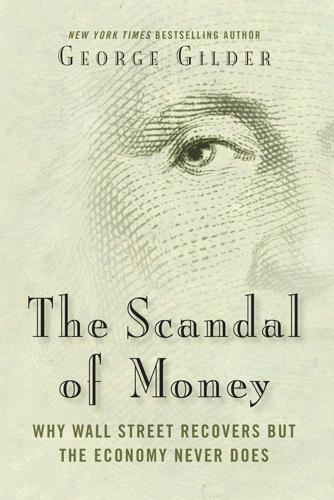
The Scandal of Money
by
George Gilder
Published 23 Feb 2016
In my last book, Knowledge and Power: The Information Theory of Capitalism and How It Is Revolutionizing Our World, I found that wealth is knowledge and growth is learning and that both are governed by the rigorous science of information.1 Prehistoric man commanded all the material resources we have today. The difference between our age and his is the expansion of knowledge. Knowledge expands through testable learning, “learning curves,” proceeding through entrepreneurial experiments. Manifesting this process is the learning or experience curve in individual businesses and industries. Perhaps the most thoroughly documented phenomenon in all enterprise, learning curves ordain that the cost of producing any good or service drops by between 20 percent and 30 percent with every doubling of total units sold. The Boston Consulting Group and Bain & Company charted learning curves across the entire capitalist economy, affecting everything from pins to cookies, insurance policies to phone calls, transistors to lines of code, pork bellies to bottles of milk, steel ingots to airplanes.2 Growing apace with output and sales is entrepreneurial learning, yielding new knowledge across companies and industries, bringing improvements to every facet of production, every manufacturing process, every detail of design, marketing, and management.
…
All existing goods and services are vulnerable to innovation, which is, as Joseph Schumpeter insisted, the very law of capitalism. To treat it as some kind of exceptional or anomalous event is a fundamental error. The information theory of capitalism defines growth as learning. Its microeconomic manifestation is the learning or experience curve in individual businesses and industries. As we saw in chapter 2, it is the most thoroughly documented phenomenon in all enterprise, ordaining that the cost of producing any good or service drops by between 20 percent and 30 percent with every doubling of total units sold. Crucially, the curve extends to customers, who learn how to use the product and multiply applications as it drops in price.
…
Order is the low-entropy carrier that makes it possible to identify information (and complexity) as disorder. Both Hidalgo and Ridley imagine that there is a conflict between evolution and the second law of thermodynamics, the entropy law. But both complex systems and entropy represent surprising deformations of order. 2.“Costs and the Experience Curve, Why Costs Go Down Forever,” chapter 2 of Bruce D. Henderson, The Logic of Business Strategy (Cambridge, MA: Ballinger Publishing, 1984), 47ff. 3.“The Six Epochs” and “The Law of Accelerating Returns,” chapters 1 and 2 of Ray Kurzweil, The Singularity Is Near (New York, NY: Viking, 2005), 7–34. 4.William D.
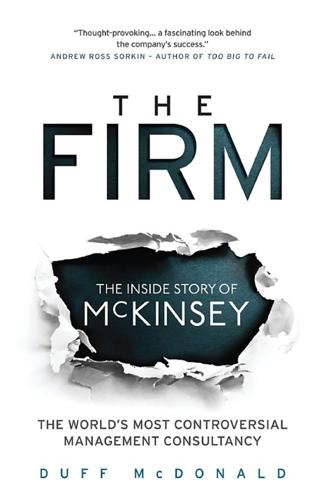
The Firm
by
Duff McDonald
Published 1 Jun 2014
McKinsey had never imagined that its sophisticated clients could be sold “products” such as the growth-share matrix and the experience curve. Under Bower’s lead, the firm had deliberately avoided flavor-of-the-month ideas, thinking that its clientele wanted smart people, not smartly packaged ideas. It was dead wrong about that. Its clients apparently wanted both. Black & Decker was a typical BCG client of the time, wrote Walter Kiechel in The Lords of Strategy. By using the tools of the experience curve—both analyzing and predicting costs—the consumer product maker took its circular saw business from 50,000 units to 600,000 units, a result of pushing its retail pricing down from $35.00 or so to $19.95.
…
“He said, ‘I lack faith in the client’s ability to execute.’ ”16 (Carnegie replied that the finding of the relics in the warehouse wasn’t the reason for resigning the engagement, but that it certainly was an indication of management’s likely inability to “respond to the modern world.”)17 Having Their Lunch Eaten If McKinsey was stalling in the early 1970s, Bruce Henderson’s Boston Consulting Group was on a roll. In addition to his four-box matrix, Henderson had recently added a second weapon to his arsenal: the experience curve. Its purpose was to help clients see how costs go down systematically along with experience and market share. For each doubling of experience, the curve suggested, total costs declined by 20 to 30 percent due economies of scale and innovation. This was not rocket science—Henry Ford had long before proven that volume begets cost savings—but a generation of American managers latched on to BCG’s insights for dear life.
…
We need a conceptual supernova, a direct response to BCG’s matrix. And I rejected that notion. That was exactly what we didn’t need. We want to help our clients solve the problems they have, not the problems we know how to solve. We don’t want to be a solution in search of a problem, and that’s what the four-box matrix was. That’s what the experience curve was. Sometimes they worked. And sometimes they didn’t.”12 Gluck continued: “I said we should forget about trying to do what BCG did. That we should tip our hat to them for what they accomplished, and then get on and do what we do best, which is to understand our clients’ strategic problems and bring our extensive knowledge and experience to solving them.”
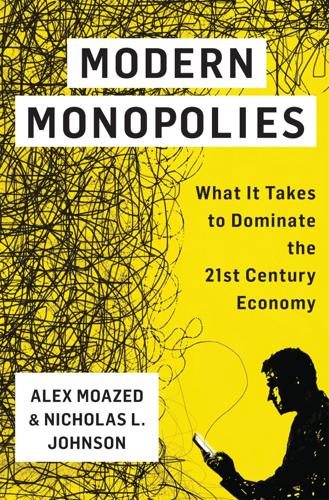
Modern Monopolies: What It Takes to Dominate the 21st Century Economy
by
Alex Moazed
and
Nicholas L. Johnson
Published 30 May 2016
Ronald Coase, “The Institutional Structure of Production,” in Nobel Lectures, Economics 1991-1995, ed. Torsten Persson (Hackensack, NJ: World Scientific Publishing, 1997). 7. Martin Reeves, George Stalk, and Filippo L. Scognamiglio Pasini, “BCG Classics Revisited: The Experience Curve,” BCG Perspectives, May 28, 2013, https://www.bcgperspectives.com/content/articles/growth_business_unit_strategy_experience_curve_bcg_classics_revisited/. 8. Oskar Lange, “The Computer and the Market,” in Socialism, Capitalism and Economic Growth: Essays Presented to Maurice Dob, ed. C. F. Feinstein (Cambridge, UK: Cambridge University Press, 1967).
…
This dynamic led to tremendous economies of scale, a concept made famous by Boston Consulting Group founder Bruce Henderson. Henderson took an idea from military strategy—concentrating mass to overwhelm the enemy—and applied it to business. His observation was fairly simple: The more of something you produce, the better you get at it. But Henderson’s idea of economies of scale and the “experience curve” enabled managers to conceptualize the relationship between size and efficiency (see Figure 2.2). Figure 2.2. Bruce Henderson’s scale curves. According to Henderson, a company’s efficiency per unit produced increased by as much as 25 percent every time it doubled its production volume.7 Henderson applied this logic as a way for businesses to achieve a competitive advantage.
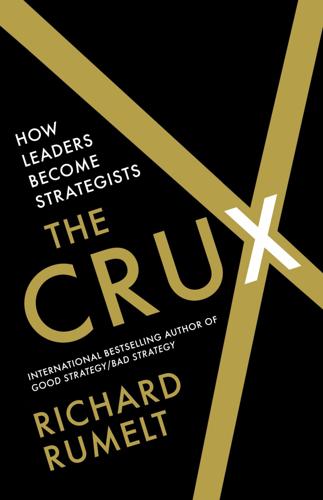
The Crux
by
Richard Rumelt
Published 27 Apr 2022
Plus, there was a movement to just-in-time production, eliminating the central stock room in favor of local stock and the reorganization of work into sub-assemblies that were then added to the airframe. The Boston Consulting Group, led by Bruce Henderson, renamed “learning by doing” as the “experience curve” and used it to catapult BCG into a leading position in strategy consulting. I saw my first experience curve in Henderson’s office in 1976. BCG analysts had studied cost data from client Texas Instruments’ semiconductor business. The log-log plot showed unit costs falling as cumulative production rose; cost per unit dropped about 20 percent for each doubling of cumulative output.
…
Much more important, over time, producers were able to pack more and more transistors onto each square millimeter of silicon—the process now dubbed “Moore’s Law.” But the critical element, one missing from Henderson’s presentation, was that Moore’s Law applies to the industry as a whole, not the individual competitor. Texas Instruments discovered this hard fact when, after racing down the hand-calculator “experience curve” in search of a protected position, it found not a pot of gold but a host of Taiwanese competitors with equivalent costs. Most of the cost reductions shown on Henderson’s curve were not proprietary and could not be the source of sustained performance differences. Experience does matter. The more stable the activity, the more complex the process, the more continued operation can lead to increases in efficiency.
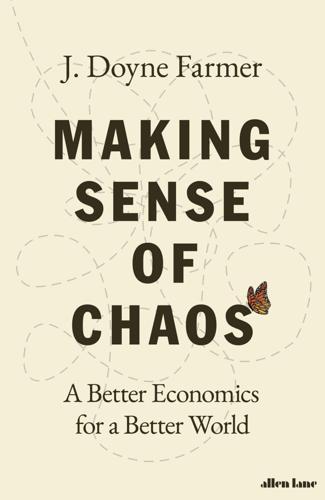
Making Sense of Chaos: A Better Economics for a Better World
by
J. Doyne Farmer
Published 24 Apr 2024
Koh and Magee gathered data on a variety of different technologies, such as electrical transmission cables, flywheels and batteries, and demonstrated that these technologies improved at exponential rates over time spans of many decades, though with highly diverse rates of progress.7 Gordon Moore was not the first to propose a law for technological change. There is a much older law for technological improvement that goes under a variety of names, including learning by doing, the experience curve and Wright’s law. This law was originally postulated in 1936 by Theodore Wright, who has an interesting background. He was the brother of both the influential evolutionary biologist Sewall Wright and Quincy Wright, one of the pioneers of international political science. Rather than following his brothers into academia, he became a World War I flying ace and went into the aviation business after the war.
…
The New York Times. https://www.nytimes.com/2015/06/29/opinion/paul-krugman-greece-over-the-brink.html Ladyman, James and Karoline Wiesner. 2020. What is a Complex System? New Haven: Yale University Press. Lafond, François, Aimee Gotway Bailey, Jan David Bakker, Dylan Rebois, Rubina Zadourian, Patrick McSharry and J. Doyne Farmer. 2018. ‘How Well Do Experience Curves Predict Technological Progress? A Method for Making Distributional Forecasts’. Technological Forecasting and Social Change 128: 104–117, doi: 10.1016/j.techfore.2017.11.001. Lafond, François, Diana Seave Greenwald and J. Doyne Farmer. 2020. ‘Can Stimulating Demand Drive Costs Down? World War II as a Natural Experiment’.
…
See also Covid-19 equilibrium 17, 29 behavioral economics and 103, 104, 105 Beveridge curve and 71 ‘Beyond Equilibrium and Efficiency’ conference (2000) 168–9 bounded rationality and 116, 117, 128 chaos and 36, 37, 128–35 clustered volatility and 164–5, 170 complexity-economics and xvi, 8, 55, 63 Computable General Equilibrium models 102 disequilibrium xiii, 71, 116, 117 DSGE models and 99–101 financial crises and 197, 198–9, 201, 215 market efficiency and 157 markets moods and 171, 173, 176 Nash equilibrium 130–32 origins and definition of 15–16 Standard economic models and xvi, 8, 17, 93, 95–6, 97, 98, 99–101 ‘The Virtues and Vices of Equilibrium and the Future of Financial Economics’ (paper, 2009) 17 EURACE model 257 European Central Bank 2, 50, 188 evolution, theory of 7, 176–9, 183, 188–9 excess profits 180–81, 198 experience curve 239 experiments 6, 28 agent-based models and 278 behavioral economics and 103–4, 106, 110, 115 chaos 33, 36 counterfactual 87–8 fluid-turbulence 39, 217–18 market 171–2, 181 ‘what-if’ 102, 181 expert opinions 6, 115 Explorer Post 114 25 Fama, Eugene 111, 143–4, 146, 148–9, 160, 177, 180 Federal Reserve Bank, US 257 Federal Reserve Bank US model (FRB/US) 2, 82 Feigenbaum, Mitchell 41 financial crises 1, 2, 11, 142, 233, 280 Asian financial crisis (1997) 195, 219, 232 avoiding future 261–2 credit, leverage and 191–8 dot-com bubble 180, 200 global financial crisis (2008) see global financial crisis Great Depression 2, 162, 191 Greek debt crisis 22 stock market crash (1987) 161–4, 165, 166, 167, 168, 187 Financial Policy Committee, UK 90 financial system credit and 191–220 see also credit disruptions that flow back and forth between the economy and, understanding 262 ecology and evolution 175–90 see also ecology markets, inefficient 139–60 see also markets self-referential market 161–74 see also markets Fisher, Adlai 216 FitzRoy, Robert 223–4 fixed-leverage caps 205 fixed-point attractor 30–31, 33, 34, 36–7, 182 floor costs 250–51, 250 fluid turbulence chaos and 34, 35, 36, 38, 39, 143, 229 intermittency in xii, 129, 216–20, 217 resemblance between financial and 216–20, 217 food chain 57–8 Ford Motor Company 238 forecast, etymology of 223 fortuitous phenomena 33 free parameters 86–7, 273–4 French, Kenneth 180 Frey, Carl 68 friction 101–3, 127, 153 Friedman, Milton 9, 106, 177 ‘Frontiers of Finance: Evolution and Efficient Markets’ (paper, 1999) 183 fundamentals 171, 175–6, 186 Gabaix, Xavier 23, 56, 104, 120–21 Gallegati, Mauro 257–8 Galla, Tobias 132 game theory 128–35 Gatti, Domenico delli 257–8 GDP (Gross Domestic Product) balance sheets and 47 business cycles and 28–9 Covid-19 and xv, xvii, xviii credit network and 191–2 economic inequality and 259 energy sector and 221 financial system size and 141 global 279 Greek debt crisis and 22 growth and 268 trophic structure of the U.S. and Chinese economies, comparison of xi, 59–63, 59 Geanakoplos, John 17, 82, 168, 193–200, 207, 214, 215 Gennaioli, Nicola 104 ‘Geometry from a Time Series’ (paper, 1980) 36 George Mason University 82, 274 Ghashghaie, Shoaleh 217 Gigerenzer, Gerd 111, 113, 114 Gillemot, László 154 global financial crisis (2008) 191 agent-based models and 190, 198–204, 206–16, 206, 209, 211 business cycle for 69, 70–71 change in the economy and 8–9 complex-systems thinking and 50 credit/leverage and 191–216, 206, 209, 211, 219 economic inequality and 259 Federal Reserve Bank US model (FRB/US) and 2, 82 GDP and 279 housing market and xi, 2, 80–90, 88, 89n, 203–4, 237 market inefficiency and 170 modeling failures and 1–2, 8–9, 121 mortgage-backed securities and 81–2, 160, 178, 187, 189–90, 193–4, 196, 202–3 risk management and 206–16, 206, 209, 211 Gode, Dhananjay 156 golden rule 125, 126–7 Goodhart, Charles 205 Google 49, 224 Google Maps 149 Granovetter, Mark 48 grass food chain and 57–8 specialists and 10–11, 44 gravity, theory of 3, 74, 153 Great Depression, The 2, 162, 191 Greece 22–3 green-energy transition 222 Climate Policy Laboratory and see Climate Policy Laboratory ‘Empirically Grounded Technology Forecasts and the Energy Transition’ (paper, 2022) 251 Fast Transition scenario 237, 252–4 labor transitions 64–72, 266 modeling evolution and 263–8, 264, 279 No Transition scenario 251–4 Slow Transition scenario 252–3 speed of 245–54, 246, 250 technological progress and 234–54, 237, 243, 246, 250 greenhouse gases 221, 229–31, 235 Greenwald, Diana 245 Gurley, John 15, 152, 154 gut brain 139–40, 142, 277 Haan, Wouter den 122 Harry (first wearable computer) 27 Harvard Mark II 55 Harvard University 17, 23, 54, 55, 141, 166 hedge fund 142, 144–5, 155, 174, 194 Heinrich, Torsten 135 Heitzig, Jobst 124 heterogeneity 7, 102–3, 260 Heterogeneous Agent New Keynesian (HANK) models 102–3, 260 heuristics 109–15 ‘adaptive toolbox’ of 113–14 agent-based simulation and 121 bounded rationality and 117, 118, 118n, 202, 206 defined 109–12 gaze heuristic 109–10 ‘imitate the best’ 124, 125–6, 127 modeling behavior directly and 112–15 risk management and 210–11 weather forecasts and 224 Higgs boson 271 high-dimensional chaos 219 Hoermann, Ingrid R. 28 Holland, John 170, 171 Hommes, Cars 172–3, 200 Homo economicus 6, 11, 103 households as agents 4, 6 agent-based models and 121, 124–7, 258, 272 Asano model and 124–7, 135 balance sheets and 46 business cycles and 124–7, 126 Climate Policy Laboratory and 264, 264, 265, 266 DSGE models and 99–100, 127, 258, 260 Heterogeneous Agent New Keynesian (HANK) models 102, 260 housing market and 81, 83–9 myopic 104 production network and 58, 60 RCK model and 124–7 savings 81 Solow model and see Solow mode synthetic 260, 267 housing market 16, 142, 189–90, 269 global financial crisis (2008) and xi, 2, 80–90, 88, 89n, 203–4, 237 London, housing prices in 89–90 Washington DC simulation xi, 80–90, 88, 89n, 110, 115, 121 Howitt, Peter 82 hydrogen-based fuels 248, 252, 253 IHS Markit xvii imitation 7, 110 ‘imitate the best’ 124, 125–6, 127 index arbitrage 163, 179 Industrial and Corporate Change 183 industries agent-based modeling and xiii, xiv–xviii, 263, 274–5 climate change and 221, 222, 254, 264, 265, 266 Covid-19 model and xiii, xiv–xviii, 263 Heterogeneous Agent New Keynesian (HANK) models and 102 households as 51 labor demand and 65–6 non-essential xiii, xiv–xv production networks 53–63, 59, 76 service 58, 60, 62 sustainable growth and 267, 268 inefficiencies, market arbitrageur and 155, 156–7 defined 141, 179–80 emergence of 160 institutional structure and 198 market crashes and 161–70, 199–200, 202 market ecology and 141, 177, 179–80, 185 Prediction Company and 147, 155, 156–7 signals and 157–9 slow path to market efficiency and 156–60 technological progress and 159 inequality, economic 1, 3, 11, 49, 124, 233, 255, 257, 258, 259–61, 279, 280 inflation 3, 28, 47, 98, 101, 123, 238, 257–8, 261 information, theory of 20 Ingerson, Thomas Edward v, 25, 27 innovation 4, 11, 12, 17 agent-based models and testing for side-effects of 187–8 balance sheets and 46 climate change and 234–54, 237, 243, 246, 250, 266 evolutionary perspective 43, 44 specialization and 63 stock market crash (1987) and 163–4 technological 3, 6, 13, 27, 28, 42, 50, 57, 60–61, 63, 100, 149, 159, 234–54, 237, 243, 246, 250, 266, 278 input-output models 55, 56 Institute for New Economic Thinking, Oxford Martin School 64, 82 institutional support, complexity economics and 13–14, 274–6 integrated-assessment models 248–51, 250 interbank-lending network 49–50 interest rates 24, 47, 82, 84, 87, 89, 98, 167, 171, 185, 194, 195, 257, 259–60, 261 International Energy Agency (IEA) 249–50, 250, 251 investment banks 142, 189–90, 195, 207, 208, 210–11, 212–13, 215 Iori, Giulia 154 Iphigenia (mythical character) 22 Ives, Matt 246 Jackson, Matthew 49 Jackson, Tim 267 Jevons, William Stanley 95–6 job space for the United States, network view of xi, 66–8, 66 Joshi, Shareen 183 Kahneman, Daniel 103–4 Kauffman, Stuart 51, 187–8 Keynes, John Maynard 97–9, 102, 257 Keynes-Schumpeter model 257 Kidder-Peabody 175, 194 Kleinnijenhuis, Alissa 216 Knight, Frank 106–7 Koh, Heebyung 238 Kolb, Jakob 124 Koopmans, Tjalling 100 Krugman, Paul 22, 42 labor transitions 64–7, 66, 266 Lafond, François 242, 244, 245 Laibson, David 23, 120–21 laptop, supply chain of xi, 51, 52, 53–4, 60–61, 121 Large Hadron Collider at CERN 271 law of large numbers 56 Lawrence, Karen 189 learning 114–15 algorithms 114–16, 117, 134–5, 171 machine learning see machine learning reinforcement 114, 131, 133–5 Wright’s law/learning by doing 239–45, 249 LeBaron, Blake 38, 39–40, 170–71 lending contracts and 140 housing bubbles/financial crises and 8–9, 80–89, 190, 191–9, 202, 203 inflation and 257 interbank-lending network 49–50 Leontief, Wassily Wassilyevich 54–7, 63 less-is-more effect 111 leverage 188, 191–216 agent-based models of the leverage cycle 198–216, 211, 219 assets and 192, 193, 196, 197, 199, 200, 204–5, 208, 210, 211–12, 211 Basel leverage-cycle model xii, 204–16, 211, 219 broker-dealer leverage and volatility, comparison of the U.S. xi, 206–7, 206 cycle 198–9, 201–2, 208, 209, 211, 213, 215–16 definition of 192–3 financial crisis (2008) and 192, 202–16, 206, 209, 211 fixed-leverage caps 205 Geanakoplos and see Geanakoplos, John Long-Term Capital Management (LCTM) and 194–8 mortgages and 84 news and 198–202 passive 208, 209, 209 prices and 196–205, 208, 209, 210–12, 211, 214, 215 risk management and 204–16, 206, 209, 211 stat-arb funds and 190 ‘The Dynamics of the Leverage Cycle’ (paper) 210 U.S broker-dealer leverage and volatility, comparison of xi, 206–7, 206 Levin, Simon 184 liabilities 45–7, 141 limit cycle 30–31, 33, 34, 37, 40 limit-order book 154–6 links 45–6, 48, 49–50, 51, 52, 53, 55, 57, 58, 59, 66–7, 66, 67, 73, 191 Lloyd, Seth 159 Lo, Andrew 183, 184 London, housing prices in 89–90 Long-Term Capital Management (LCTM) 194–8 Lorenz attractor xi, 30–36, 32 Lorenz, Edward xi, 30–36, 32, 38–40, 217, 219, 223, 228 Lotka-Volterra equations 182–3 Lucas critique 4, 116 Lucas, Robert 98–9 machine learning xix, 3, 11, 76, 170 agent-based models and 114–15 analogs and 224 firm-level network and 273 stock market and 145, 170, 171 Mackintosh, David xi, 119 Macrocosm 276 macroeconomics 3, 7, 9, 29, 47, 56, 102, 103, 107, 128 evolution of contemporary 97–9 Macrofinancial Seminar, London School of Economics (2018) 122 Magee, Christopher 238 malfunction, market 11, 141, 161, 170, 174, 178, 179, 180, 185, 201 market ecology predicting 184–6 Manhattan Project 41 Mantegna, Rosario: Econophysics 153 manufacturing xi, 51–63, 52, 59, 79, 98, 121, 239, 277 margin calls 193–7, 199–202 markets complexity economics and mood of 170–74 crashes see individual crash name econophysics and 56, 152–3, 155, 168–9, 183 efficiency/inefficiency see efficiency, market fat tails 165, 173, 199–200, 215, 217, 218 financial system and 139–42 leverage and see leverage market ecology see market ecology market-impact function 150–56, 163, 178–81, 189–90, 195 Prediction Company and see Prediction Company rational expectations and see rationality regulation see regulation risk and see risk self-referential 161–74 signals and see signals stock market see stock market technological progress and 149, 159 thin tails 165, 218 Markowitz, Harry 111–12 Marshall, Alfred 95–6; Principles of Economics 43 Marx, Karl 48 McCarthy, Joe 25 McGill, Jim 144 McNerney, James 57–8, 239–40, 245 Mealy, Penny xi, xiv, 64, 246 Meriweather, John 194 Merton, Robert 150, 194 meta-dynamical systems 50–51 metabolism, economy as 43, 50–54, 55, 139, 277 method of analogs 224–5, 229, 231 Metropolis, Nicholas 41 Mexico 65, 259 microdata 72, 87, 229 microeconomics 9, 47, 97, 99 micro-founded models 99–103, 122, 124 micro-simulation 1, 260–61 Milgram, Stanley 45 Miller, Merton 196, 215 Minsky, Hyman 193, 196, 214 MIT 183, 238 modeling, future 255–69 climate change and 263–7, 264 disasters and 262–3 economic inequality and 259–61 financial crises and 261–2 steady course of economy and 257–9 sustainable growth and 267–9 models.

Taming the Sun: Innovations to Harness Solar Energy and Power the Planet
by
Varun Sivaram
Published 2 Mar 2018
Hongbo Li, Kaifeng Wu, Jaehoon Lim, Hyung-Jun Song, and Victor Klimov, “Doctor-Blade Deposition of Quantum Dots onto Standard Window Glass for Low-Loss Large-Area Luminescent Solar Concentrators,” Nature Energy 1 (2016): 16157, doi:10.1038/nenergy.2016.157. 40. Prashant Kamat, “Quantum Dot Solar Cells: The Next Big Thing in Photovoltaics,” Journal of Physical Chemistry Letters 4, no. 6 (2013): 908–918, doi:10.1021/jz400052e. 41. Francois Lafond et al., “How Well Do Experience Curves Predict Technological Progress? A Method for Making Distributional Forecasts,” Journal of Technological Forecasting and Social Change. In Press. 2017, https://arxiv.org/pdf/1703.05979.pdf. 42. Nancy M. Haegel et al., “Terawatt-Scale Photovoltaics: Trajectories and Challenges,” Science 356, no. 6334 (April 14, 2017): doi: 10.1126/science.aal1288. 43.
…
Demonstration typically follows research and development (R&D) and requires a larger scale of funding; recognizing that demonstration is an important aspect of the technology development process, the U.S. Department of Energy’s strategy for energy innovation involves the promotion of research, development, and demonstration (RD&D). Experience curve A graphical illustration of the industrial principle that increased production of a product or delivery of a service leads to lower unit costs of the product or service. This relationship exists for several reasons, including learning—the improvement in production efficiency and cost that accompanies repeated performance of tasks—as well as economies of scale.
…
See also specific countries compensation for unused solar power in, 76–77 funding for new solar projects in, 65 HVDC transmission lines in, 204 power markets in, 241 solar PV production in, 44–45 supergrids involving, 196, 198, 205–206 YieldCos in, 93–94, 97 European Union, 77, 241 EVs. See Electric vehicles Experience curve, 289g Exxon, 34, 35, 87 Facebook, 28 Falling-particle receivers, 188 Farms, solar, xiii–xiv, 14 Feed-in tariffs, 36, 50, 57, 240, 281g Feynman, Richard, 157 Fiji, 6 Financial engineering, 85, 89, 114, 118 Financial innovation and capital for new solar projects, 90–92 defined, 289g for expansion of solar energy, 23–24, 85 and future of solar energy, xvi, 2 overcoming deployment challenges with, 57, 58b preserving economic appeal of solar with, 78–79, 80f, 83 public policies to encourage, 194, 270 and technology lock-in, 165 Financing new solar projects, 23, 87–114 corporate investment as, 105–110 financial innovation and capital for, 90–92 with Master Limited Partnerships, 92–98 in off-grid solar, 126–128 from public sector, 110–114 securitization for, 98–105 and SunEdison collapse, 87–89 Firm Spread, 243 First Solar, 38, 40, 94, 155, 164, 242 Flexible-base resources for deep decarbonization, 234–236, 238 defined, 285g in power market, 239, 242–243 and state incentives for solar deployment, 269 Flexible tandem solar cells, 153 Flow batteries, 230 Flux field, 183 Flywheels, 228 Food production, 245–247 Fossil fuels.

Masters of Management: How the Business Gurus and Their Ideas Have Changed the World—for Better and for Worse
by
Adrian Wooldridge
Published 29 Nov 2011
Consultancies have been making money out of business ideas since they were first launched. Bower turned McKinsey into the world’s most successful consultancy by investing in ideas as much as cultivating relations. Then, in the 1960s, the Boston Consulting Group threatened to knock the Bower boys off their perch by producing not one but two “big ideas.” The “experience curve” taught companies that they could reduce their costs as they expanded their market share, thanks to the accumulation of know-how. The “matrix” encouraged companies to view themselves not as an undifferentiated whole but as a portfolio of businesses that make different contributions to the bottom line (“cash cows” versus “dogs,” for example).
…
Walter Kiechel describes strategy as the most powerful business idea of the past half century, and strategists as the shock troops of one of the great business revolutions, the intellectualization of business.4 The man who did more than anybody else to produce this shiny new machine was Bruce Henderson, an irascible contrarian who boasted that he was sacked from every job he held until he started his own company, the Boston Consulting Group. With Henderson at the helm, BCG invented a new form of consulting: rather than just cozying up to CEOs as McKinsey’s had done, it focused on designing elegant intellectual models. The “experience curve” taught companies that they could reduce their costs as they expanded their market share, thanks to the accumulation of know-how. The “matrix” encouraged companies to view themselves not as an undifferentiated whole but as a portfolio of businesses that make varying contributions to the bottom line (“cash cows” versus “dogs,” for example).
…
The urge at the heart of strategic planning—the urge to survey the horizon and shape the future, to rise above the hubbub of daily business and push the world in a new direction—remains as powerful now as ever. Down in the Engine Room How much do all these theoretical gyrations affect flesh-and-blood business people? They certainly matter. Business people beat a path to BCG’s door during the glory days of the experience curve. Two decades later they turned Prahalad and Hamel into business celebrities. But even as we follow the rise and fall of these business fashions we need to remember two things. The first is that the business of business goes on relentlessly: companies have to take a view of the future and allocate their resources accordingly, whatever the management gurus are saying.
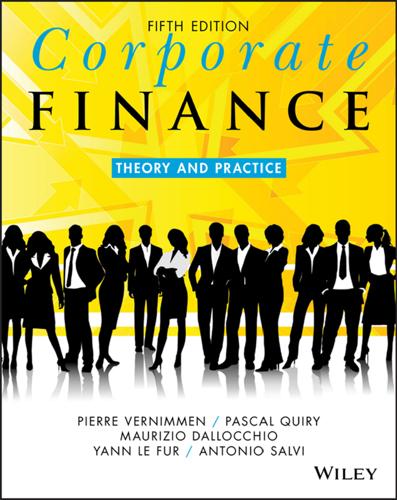
Corporate Finance: Theory and Practice
by
Pierre Vernimmen
,
Pascal Quiry
,
Maurizio Dallocchio
,
Yann le Fur
and
Antonio Salvi
Published 16 Oct 2017
Consequently, costs need to be kept under tight control so that products are manufactured as cheaply as possible, product lines need to be streamlined to maximise economies of scale and the production process needs to be automated as far as possible. Market share is a key success factor since higher sales volumes help keep down unit costs (see Boston Consulting Group’s famous experience curve, which shows that unit costs fall by 20% when total production volumes double in size). This is where engineers and financial controllers are most at home! It applies to markets such as petrol, milk, phone calls, and so on. Where competition is product-driven, customers make purchases based on after-sales service, quality, image, etc., which are not necessarily price-related.
…
However, return on equity is very unstable and it may decline suddenly when the growth rate of the activity slows down. This was the strategy of Suntech, the Chinese world leader in solar panels, which enabled it to take a lion’s share of its market, or as a consultant would put it, to move down its experience curve, but which was also the source of its collapse in 2013. The leverage effect sheds light on the origins of return on equity, i.e. whether it flows from operating performance (i.e. a good return on capital employed) or from a favourable financing structure harnessing the leverage effect. Our experience tells us that, in the long term, only an increasing return on capital employed guarantees a steady rise in a company’s return on equity.
…
In this context, corporate strategy consulting firms in the 1960s, and in particular BCG, demonstrated on the basis of sector studies that a statistical relationship exists between the accumulated volume of production and the unit cost. The greater the accumulated volume of production, the lower the unit cost will be. The rather simplistic nature of the relationship has elicited some criticism. Nevertheless, in the majority of cases, all sectors can be characterised at a given time by an experience curve on which companies are found at a more or less low level. This type of relationship highlights the importance of the company’s growth rate, compared to that of its competitors, and, more generally, compared to its sector. The more a company grows compared to its sector (i.e. the more it increases its market share), the lower its industrial costs will be, and the better it will be able to withstand competition, and thus to survive.

The Singularity Is Nearer: When We Merge with AI
by
Ray Kurzweil
Published 25 Jun 2024
Cumulative Capacity,” Our World in Data; Nemet, “Interim Monitoring of Cost Dynamics for Publicly Supported Energy Technologies,” 825–35; Farmer and Lafond, “How Predictable Is Technological Progress?”; “IRENASTAT Online Data Query Tool”; IRENA, Renewable Power Generation Costs in 2021; François Lafond et al., “How Well Do Experience Curves Predict Technological Progress? A Method for Making Distributional Forecasts,” Technological Forecasting & Social Change 128 (March 2018): 104–17, https://doi.org/10.1016/j.techfore.2017.11.001; Sandra Enkhardt, “Global Solar Capacity Additions Hit 268 GW in 2022, Says BNEF,” PV Magazine, December 23, 2022, https://www.pv-magazine.com/2022/12/23/global-solar-capacity-additions-hit-268-gw-in-2022-says-bnef.
…
Cumulative Capacity,” Our World in Data; Nemet, “Interim Monitoring of Cost Dynamics for Publicly Supported Energy Technologies,” 825–35; Farmer and Lafond, “How Predictable Is Technological Progress?”; “IRENASTAT Online Data Query Tool”; IRENA, Renewable Power Generation Costs in 2021; Lafond et al., “How Well Do Experience Curves Predict Technological Progress?,” 104–17; Enkhardt, “Global Solar Capacity Additions Hit 268 GW in 2022, Says BNEF.” BACK TO NOTE REFERENCE 178 Hannah Ritchie and Max Roser, “Renewable Energy—Renewable Energy Generation, World,” Our World in Data, accessed April 28, 2023, https://ourworldindata.org/grapher/modern-renewable-energy-consumption?
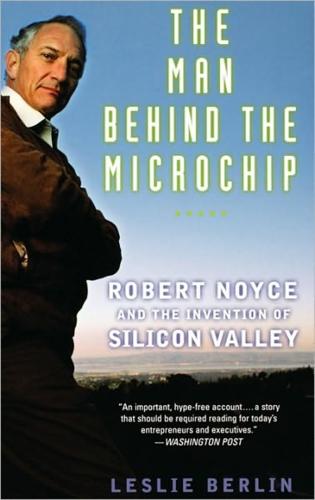
The Man Behind the Microchip: Robert Noyce and the Invention of Silicon Valley
by
Leslie Berlin
Published 9 Jun 2005
When a Fairchild distributor asked Noyce if combining the function of 138 THE MAN BEHIND THE MICROCHIP several transistors on one integrated circuit and then selling that integrated circuit for less than any one of the individual transistors was a sure path to corporate suicide, Noyce simply smiled in a way that made it clear he did not think so.31 In effect, Noyce was betting Fairchild’s bottom line against two hunches. He suspected that if integrated circuits could make their way into the market, customers would prefer them to discrete components and would begin designing their products around the new devices. He also calculated that as Fairchild built more and more circuits, experience curves and economies of scale would enable the company eventually to build the circuits for so little that it would be possible to make a profit even on the seemingly ridiculously low price. Gordon Moore has said that Noyce’s decision to lower prices to stimulate demand so that the production volumes could grow and the cost of production be decreased accordingly was as important an “invention” for the industry as the integrated circuit itself.
…
Noyce was betting that once Fairchild artificially lowered the price for integrated circuits, the resulting demand would be so high that his “per-copy price” would actually fall below the price they charged.33 “I doubt if Noyce was very sure [price cuts were] the best way,” Gordon Moore says, but Noyce was never one to shy away from a calculated risk. Fairchild was already infamous for its aggressive pricing, and integrated circuit prices were already falling in the spring of 1964. Noyce had an intimate familiarity with the realities of the experience curve. Between 1959 and 1962, for example, Fairchild’s production of its LPHF transistor line increased 660-fold, with costs only quintupling. The price of the transistor fell by 90 percent, yet revenue grew ten-fold and profits tripled. Noyce suspected something similar could happen with integrated circuits if only he could convince customers to buy them.34 There was nothing graceful or subtle in the price-cutting approach; it was, instead, an attempt to develop the market and reduce costs by means of brute force.
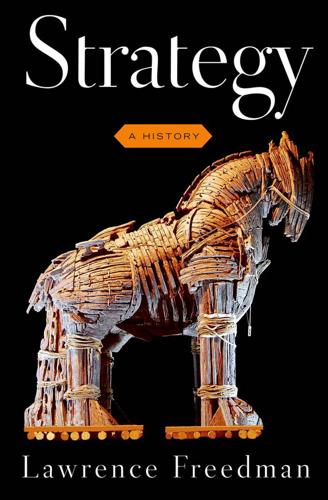
Strategy: A History
by
Lawrence Freedman
Published 31 Oct 2013
The challenge was to develop the necessary thinking in terms sufficiently explicit to be “executed in a coordinated fashion in complex organizations.” His approach, in stark contrast to the complexity of Ansoff, was to apply micro-economic methodology, to develop what he called “powerful oversimplifications,” which BCG then sold to companies.15 The oversimplification that established his reputation was the “experience curve.” Based on early studies of the aircraft industry, the core idea was that the more units produced, the lower the costs and the higher the profits. When plotted on a curve this could show the state of a competitive relationship. The presumption was that for companies making the same product, variations in costs were largely related to market share.
…
Businesses should expect costs to decline systematically and predictably as a result of their superior productive experience. While the methodology encouraged companies to look at their total costs and recognize economies of scale, it could also be seriously misleading. In a mature industry the experience curve would flatten out. It could also encourage a race to the bottom, as prices were cut in the expectation of higher volumes which might not materialize, and then leave little scope for investment. As Ford’s Model T experience demonstrated, even the master of a product with costs kept down to a minimum can still be caught out by a better product.
…
Stalk was most impressed by the way that Honda had accelerated its production cycles to head off the competition and made this the central lesson he drew for Americans. Although this was undoubtedly impressive, this focus played down the extent to which Honda’s strategy had been brutally attritional, with its price cuts and promotions. Hamel and Prahalad also used Honda in 1994 as an example of exploiting core competence, mocking the experience curve, demonstrating great ambition and creativity in extracting maximum benefit from the mastery of the internal combustion engine (which allowed them to move successfully into a number of related production lines, from lawnmowers to tractors and marine engines), and enabling a challenge to Ferrari and Porsche in the high-end sports car market with the new NSX.
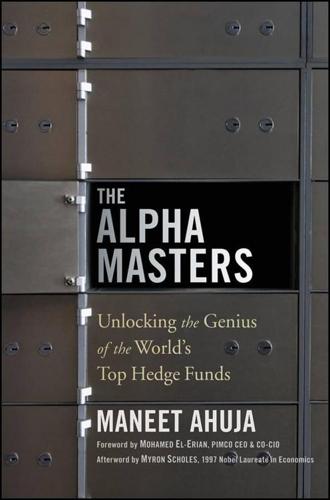
The Alpha Masters: Unlocking the Genius of the World's Top Hedge Funds
by
Maneet Ahuja
,
Myron Scholes
and
Mohamed El-Erian
Published 29 May 2012
“Bill was a hell of a salesman,” Tilson said. “He was very smart, very persuasive, and he was a very savvy businessman even as a teenager. He clearly had a passion for business and investing at a young age. It is a profession where experience matters a lot. There is no doubt he was at the top of the experience curve at a young age.” Running his own firm is particularly satisfying for Ackman, who says the biggest driver of his early life was independence. “I wanted to be able to say whatever I wanted to say,” he recalls. “I wanted to be able to do whatever I wanted to do.” Nothing in particular inspired this desire in him; he was a typical kid, expected to obey his parents no more or less than usual.
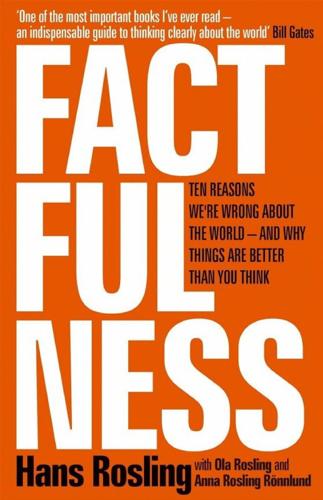
Factfulness: Ten Reasons We're Wrong About the World – and Why Things Are Better Than You Think
by
Hans Rosling
,
Ola Rosling
and
Anna Rosling Rönnlund
Published 2 Apr 2018
“Towards the endgame and beyond: complexities and challenges for the elimination of infectious diseases.” Figure 1. Philosophical Transactions of the Royal Society B, June 24, 2013. DOI: 10.1098/rstb.2012.0137. http://rstb.royalsocietypublishing.org/content/368/1623/20120137. Lafond, F., et al. “How well do experience curves predict technological progress? A method for making distributional forecasts.” Navigant Research. 2017. https://arxiv.org/pdf/1703.05979.pdf. Larson, Heidi J., et al. “The State of Vaccine Confidence 2016: Global Insights Through a 67-Country Survey.” EBioMedicine 12 (October 2016): 295–301.
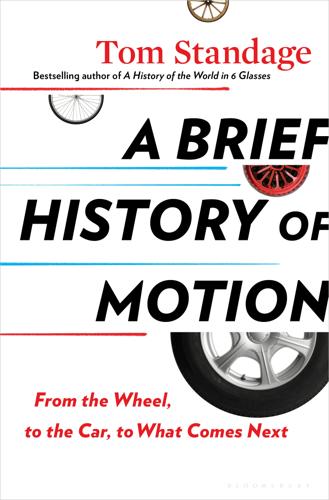
A Brief History of Motion: From the Wheel, to the Car, to What Comes Next
by
Tom Standage
Published 16 Aug 2021
The thousand-fold growth in American car sales over twenty years is equivalent to doubling every two years (because 2^10=1,024), which is, of course, one formulation of Moore’s Law, which has long been used to map the steady increase in microprocessor transistor density, and hence computing performance at a given price. Both are in fact examples of a deeper law known as Wright’s Law, also known as the experience curve, which states that for every doubling of the cumulative production of a particular item, costs fall by a constant percentage. This turns out to apply to a wide range of manufactured goods. CHAPTER 6 The account of the death of Henry Bliss draws on contemporary newspaper reports in the Alton Evening Telegraph, New York Times, Washington Evening Times, and New York World.

The End of Medicine: How Silicon Valley (And Naked Mice) Will Reboot Your Doctor
by
Andy Kessler
Published 12 Oct 2009
I thought I’d just found my first use of technology, real bits and bytes and processors and gigabyte drives that not only get cheaper every year but are changing health care for the better. Not like those discredited scanners. “This is a very efficient process and mind-set. It’s all about the experience curve.” Interesting choice of words. Silicon Valley is definitely one up on Hollywood. They have six degrees of separation from Kevin Bacon, but around here, it is usually no more than three degrees of separation. Steve Strandberg, an old colleague from Morgan Stanley who had his own boxing matches with Frank Quattrone, was an investor in R2 Technologies.
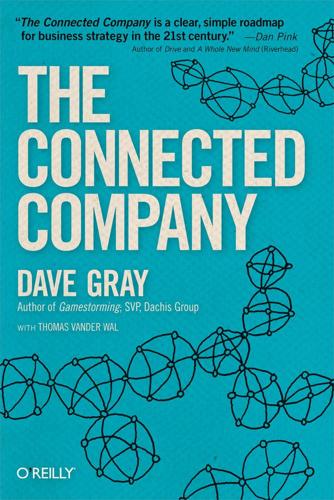
The Connected Company
by
Dave Gray
and
Thomas Vander Wal
Published 2 Dec 2014
But with every move, those tradeoffs make it more and more difficult to go anywhere else but up toward the top of that particular peak. Eventually, you reach a point where you can’t go any farther up—or, you will have to go downhill before you can scale another peak. And that means that before you can get better, you will need to get worse. This adaptive walk toward fitness peaks is another way to visualize the experience curve and its diminishing returns. As you move upward toward an optimum—or peak—efficiency, there are fewer and fewer choices that will take you higher on the landscape, until you reach the top. And once you have reached a peak, moving in any direction will take you downhill. If you are at the top of a fitness peak and the landscape starts changing, it can really throw you off.
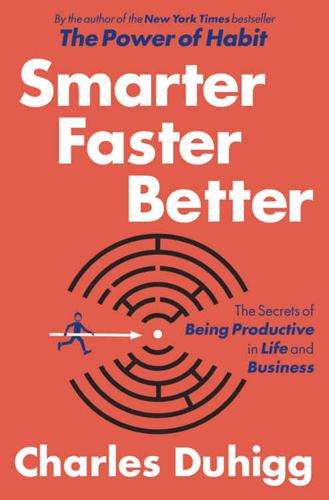
Smarter Faster Better: The Secrets of Being Productive in Life and Business
by
Charles Duhigg
Published 8 Mar 2016
Andrew and I both need to be a force to make things move along, while at the same time, trying to keep fear from slowing them down or getting stuck. This is what makes the job so hard.” make them stay put Art Fry, “The Post-it note: An Intrapreneurial Success,” SAM Advanced Management Journal 52, no. 3 (1987): 4. from wine spills P. R. Cowley, “The Experience Curve and History of the Cellophane Business,” Long Range Planning 18, no. 6 (1985): 84–90. middle of the night Lewis A. Barness, “History of Infant Feeding Practices,” The American Journal of Clinical Nutrition 46, no. 1 (1987): 168–70; Donna A. Dowling, “Lessons from the Past: A Brief History of the Influence of Social, Economic, and Scientific Factors on Infant Feeding,” Newborn and Infant Nursing Reviews 5, no. 1 (2005): 2–9.
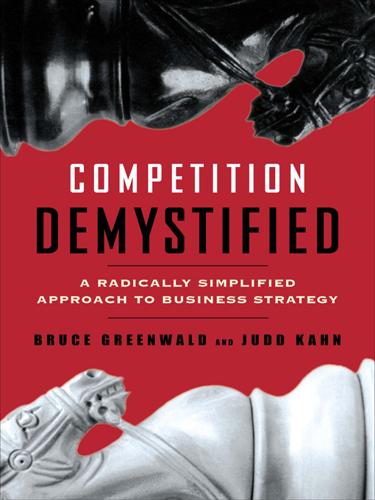
Competition Demystified
by
Bruce C. Greenwald
Published 31 Aug 2016
Distribution and service support for raw, unrecorded CDs accounted for a tiny share of the costs, and while the original development costs may have been high, continuing R&D expenditures were negligible. Learning curve—related cost advantages, Philips’s only remaining hope of competitive advantage, were undermined by the rapid-growth CD market, which allowed its competitors also to move quickly down the experience curve. Philips confronted a toaster world almost immediately. In both these instances, the standard measures of market attractiveness are not what mattered for success. Neither huge size nor rapid growth were critical characteristics for strategy formulation. Nor were core competences the issue. Both Philips and Cisco brought high levels of relevant technical capabilities to the CD and network equipment markets, and only one of them succeeded, for a time, in producing exceptional returns.
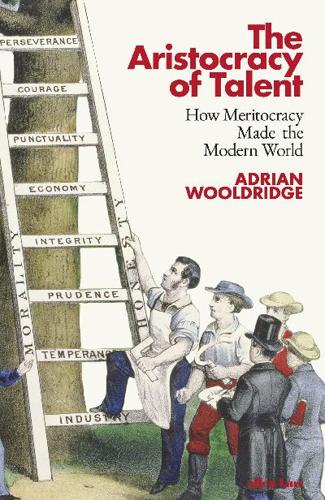
The Aristocracy of Talent: How Meritocracy Made the Modern World
by
Adrian Wooldridge
Published 2 Jun 2021
The same cult of ‘smarts’ gripped management consultancies. Bruce Henderson, the founder of the Boston Consulting Group (BCG), believed that the company’s only chance of challenging McKinsey lay in out-thinking it rather than out-networking it. To that end, he produced a series of elegant intellectual models such as the ‘experience curve’, which taught companies that they could reduce their costs as they expanded their market share, thanks to the accumulation of knowhow, and the ‘growth share matrix’, which encouraged companies to view themselves not as an undifferentiated whole but as a portfolio of businesses that make different contributions to the bottom line (‘cash cows’ vs ‘dogs’, for example).

The Golden Passport: Harvard Business School, the Limits of Capitalism, and the Moral Failure of the MBA Elite
by
Duff McDonald
Published 24 Apr 2017
In 1982 and 1983, McKinsey’s share of Baker Scholars kept falling. BCG, in particular, was eating into McKinsey’s commanding position. To some extent, this reflected the influence of newer, sexier ideas that appealed as much to impressionable young MBAs as to clients. BCG founder Bruce Henderson’s “experience curve” and “growth-share matrix” were all the rage in consulting. And whereas McKinsey self-consciously avoided talking about its competitors, they did not return the favor. BCG recruiters, for example, would characterize McKinsey as the natty, old-fashioned consultants who wore high socks and carried umbrellas.